If you are in the market for a new truck or SUV, you have one big decision ahead: 4×2 vs 4×4?
While there are benefits to both drivetrain configurations, they will both have different effects on the performance of your vehicle, and it is important to understand the differences between them.
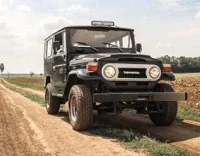
Quick Answer – Should you buy a 4×2 SUV or a 4×4 SUV: – for featured snippet
Only two of the wheels are making the vehicle move, i.e being given torque on a vehicle with 4×2 drivetrain – either on the front axis or the rear. However, on a vehicle with 4×4 drivetrain, all wheels are making the vehicle move, i.e being given a torque. 4×4 drivetrains can either be all-wheel drive (AWD) or four-wheel drive (4WD).
If you have never heard those terms or are having a tough time deciding which to pick, we are here to help you out.
This post will tell you everything you need to know about 4×2 vs 4×4 drivetrain configurations, and how to choose between them.
The drivetrain can have a big impact on handling and also on fuel economy.
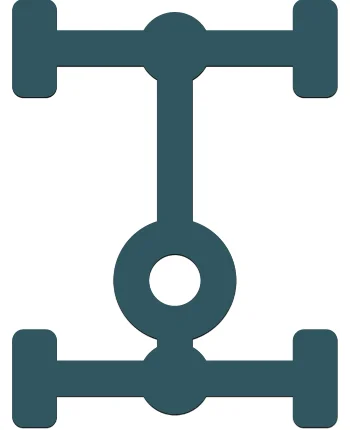
Definitions: 4×2, 4×4, AWD, Full/Part Time
The drivetrain of your vehicle is the mechanical system that connects the engine to the wheels.
There are several different types of drivetrain configurations, each designed for different kinds of driving conditions.
Here are a few definitions of drivetrain configurations that you should know, before we get into the details of each.
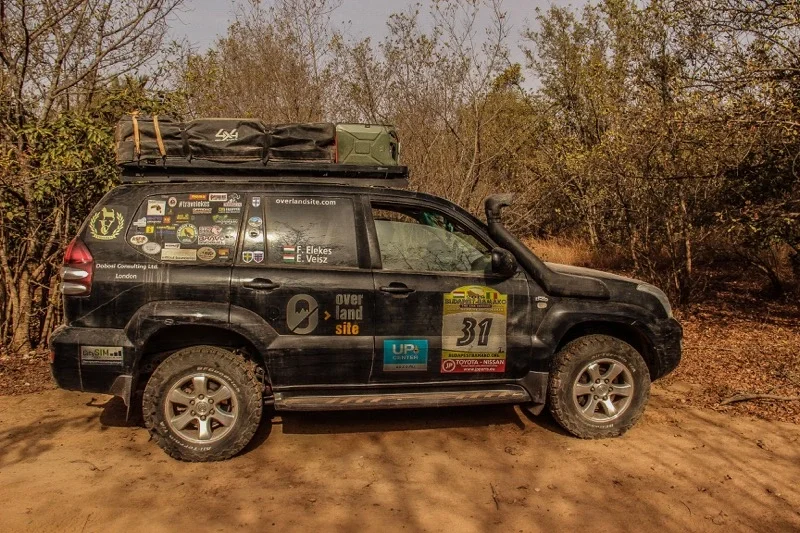
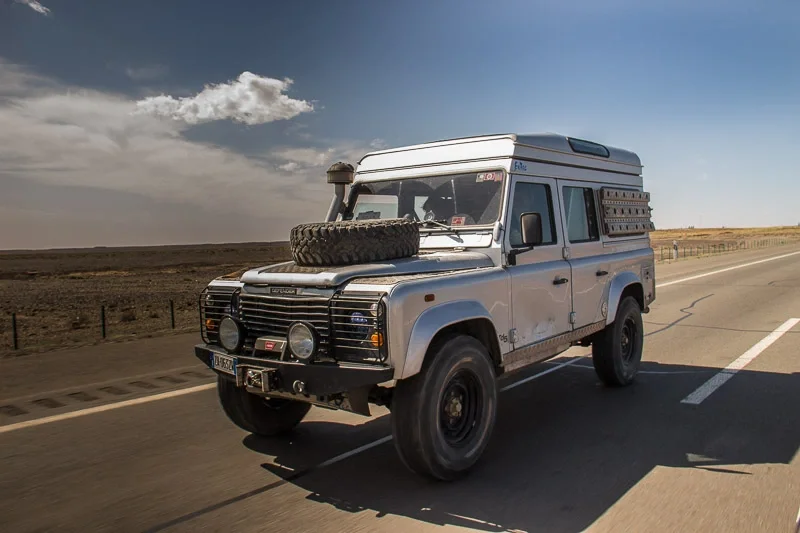
What is 4×4 Drive?
Let’s first answer the main question: What does 4×4 or 4WD mean?
4×4 is the term used to describe four-wheel drive cars (i.e. 4WD cars). In a 4×4 vehicle, all four wheels are being actively driven by the engine.
4x4s are generally best at driving on slick roads or bumpy off-road terrain – we’ll get more into the uses later.
People commonly refer to all types of off-road cars as 4×4’s, regardless if they are full-time 4×4’s, AWD’s or part-time four-wheel drives. We will get to the definitions of all of these below.
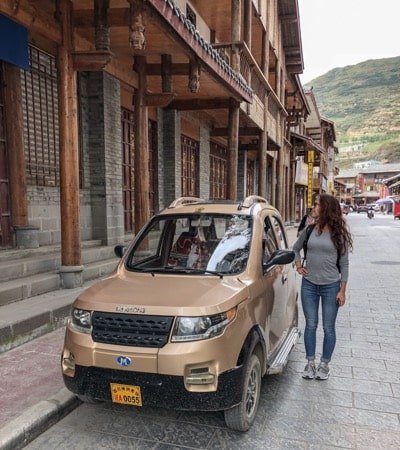
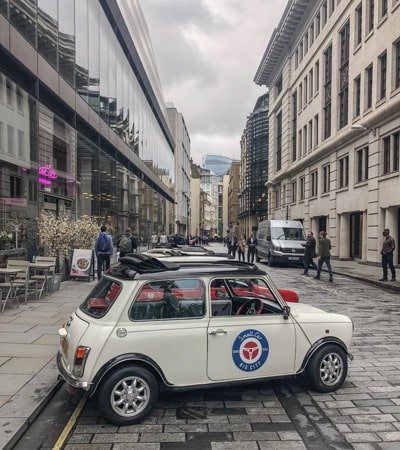
What is 4×2 Drive?
In a 4×2, or two-wheel drive vehicle, only two of the four wheels on the car are actively driven by the engine.
It could be the front two wheels or the rear wheels: i.e. front-wheel drive or rear-wheel drive. These vehicles often have better fuel economy and are more affordable than four-wheel-drive vehicles. It’s one of the biggest wins in the 4×4 vs 4×2 battle.
Most modern family cars have a front-wheel drive configuration as the rear-wheel drive set up is more common for more powerful luxury or sport cars.
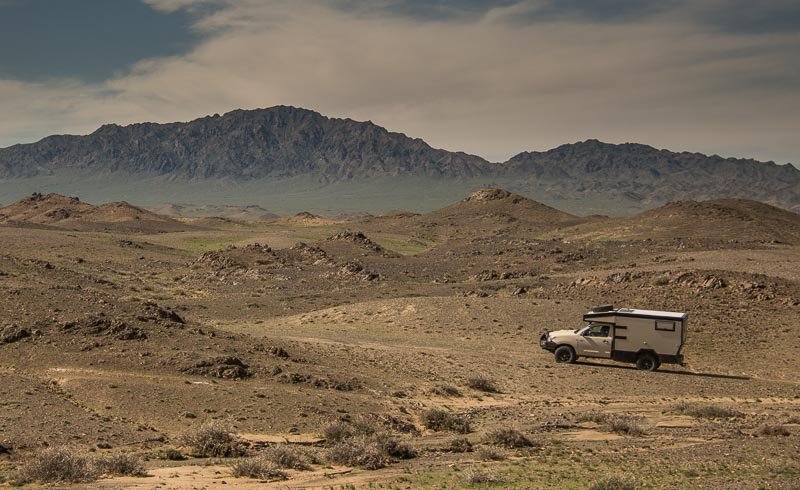
Part-time 4WD
A part time 4 wheel drive vehicle can be converted from two-wheel drive to 4 wheel drive mode.
When switched into four-wheel drive mode, the front and rear axles are synced together with a shift lever.
These kinds of vehicles are designed to accommodate for different road types and weather conditions.
Part-time 4WD vehicles generally have a high and low speed mode.
They should be switched into four-wheel drive mode only in necessary off-road conditions, and should only be driven on concrete in two-wheel drive.
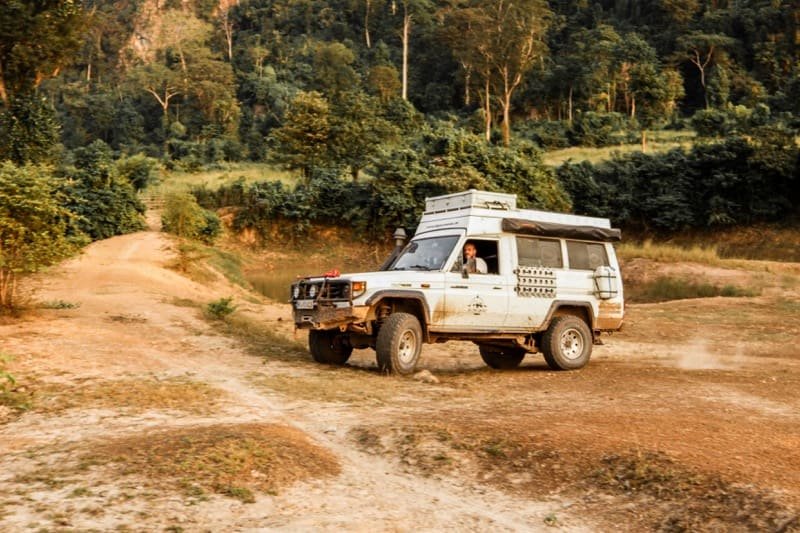
Full-time 4WD
Full time 4 wheel drive vehicles are more or less the converse of part time 4WD – they can operate in both 2WD and 4WD modes, but default in four-wheel drive.
They can be driven in four-wheel drive at all times, or switched into two-wheel drive on smooth roads to save gas.
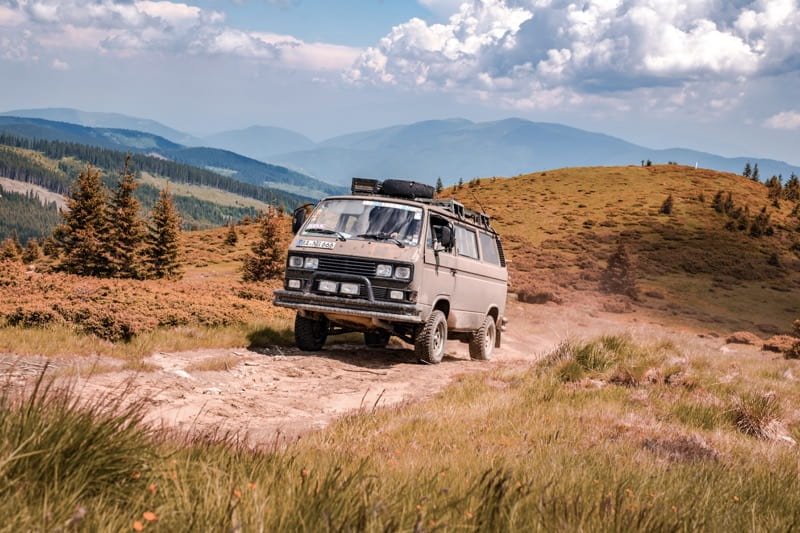
Automatic 4WD
An automatic 4WD vehicle will shift into 4 wheel drive automatically, when the vehicle senses that the tires are slipping.
These vehicles can be handy for someone who regularly switches between on-road and off-road driving, or in an area with unpredictable weather conditions.
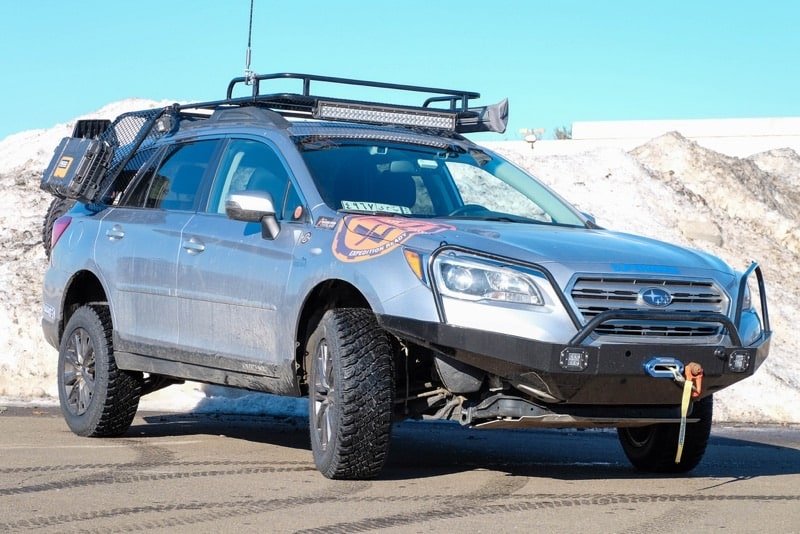
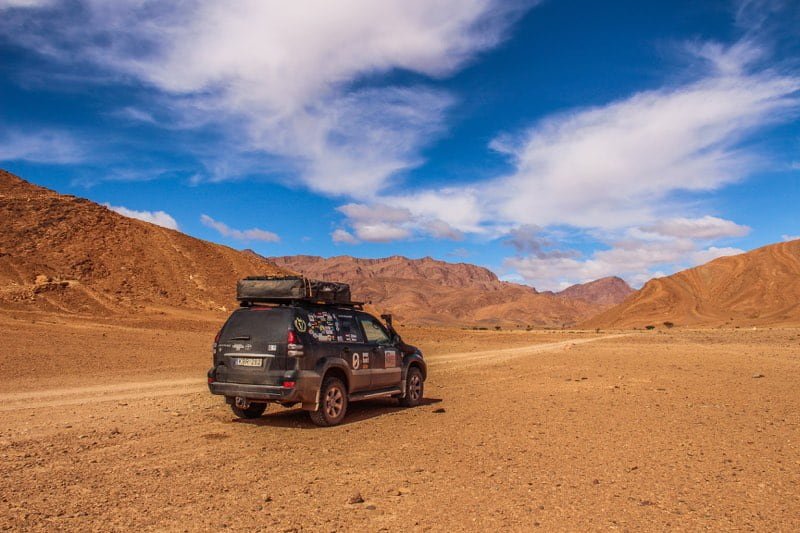
All Wheel Drive (AWD)
All wheel drive, or AWD, is another term that you will commonly see used to describe 4×4 vehicles.
The main difference is that an AWD vehicle supplies power to all four wheels all the time – there are no manual or automatic settings to revert to two-wheel drive.
If you’re after and all-wheel-drive vehicle, you need to decide whether you’d like to have the option to choose low gear or not.
I’ve been often asked: is AWD 4×4 or 4×2?
Well, as you can see above, AWD vehicles are usually 4×4, but there are some rare and extreme examples when they are 6×6 or more!
Pros and Cons of 4×2 and 4×4 Drivetrains
The best drivetrain configuration for your new SUV will depend on your priorities, budget, and the type of driving you normally do.
Here are the pros and cons to both drivetrain types, to give you a better idea of how they work.
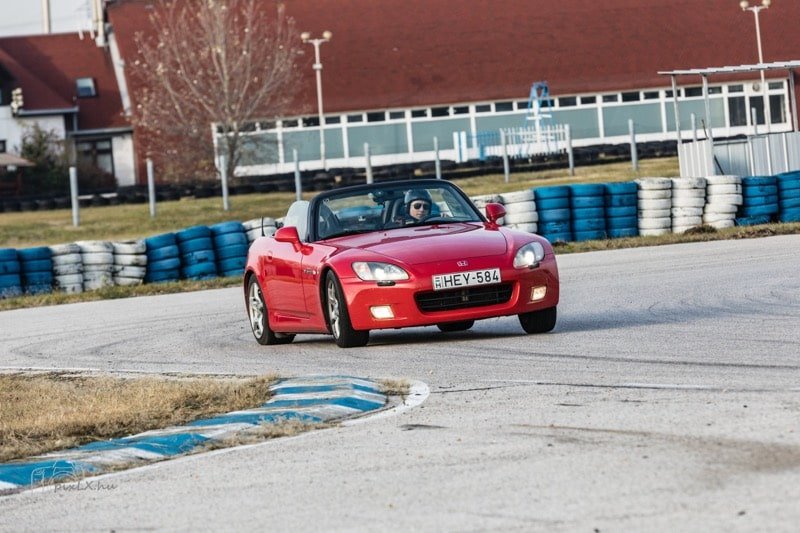
4×2 Pros
One of the biggest benefits of a 4×2 drivetrain is the affordability.
Not only are 4×2 vehicles less expensive at the outset, they are also more fuel efficient than 4x4s, and cost less to repair and maintain.
These are doubtless the greatest advantages.
But let’s not forget the fun factor. If the vehicle is rear-wheel-drive, you can have a lot of fun with it in a safe environment. The Honda S2000 is a great example of this argument.
You can also have fun with a 4×4, but the experience is different.
Featured Articles
4×2 Cons
The main downside to driving a vehicle with a 4×2 drivetrain configuration is that it is more likely to slip or get bogged in mud or sand.
Because power is only directed to two wheels, the wheels that are not being actively driven will not have the power to maintain control on a slippery surface.
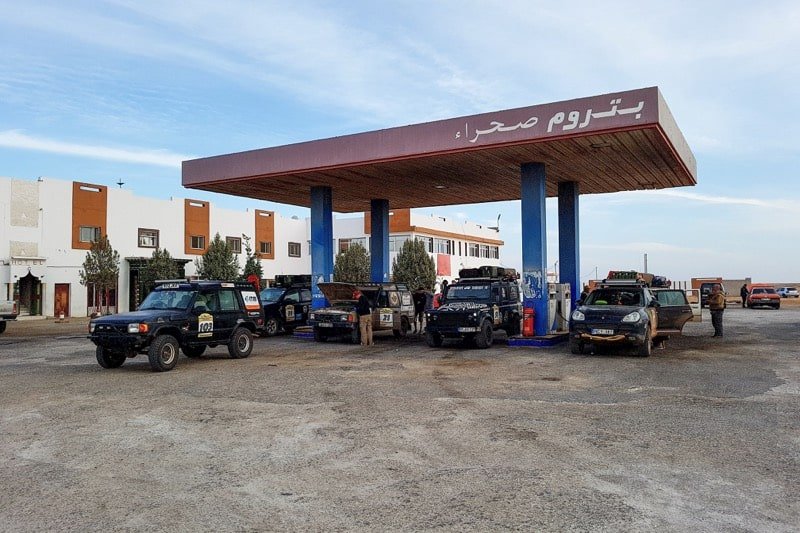
4×4 Pros
4×4 vehicles are great for handling slick roads in rainy, snowy, or icy conditions. Because power is supplied to all four wheels, they have a better grip on the road and are less likely to slip where 4×2 vehicles might.
They are also good for off road driving. 4×4 vehicles are less likely to get stuck in the mud or in deep sand. The advantage in having better traction in any circumstances cannot be understated.
If you are a serious off road driver, 4×4 – full time or automatic – is an absolute necessity.
4×4 Cons
While 4×4 vehicles are great for driving in slick conditions and off road, there are some downsides. They are generally more expensive, because of the extra drivetrain components.
They are also less likely to be fuel-efficient. It takes a lot of energy to power all four wheels at once, so you will have to fill up the tank more regularly than you would with a 4×2 vehicle.
Who Should Buy a 4×4 or a 4×2 Vehicle?
What is the difference between 2×4 and 4×4? Is a 4wd better than a 2wd? There are benefits to both drivetrain configurations, but it is important to understand the difference – each type of vehicle will be better for certain needs.
A 4×4 vehicle is best for someone who does a lot of off-road driving. They are ideal for driving on muddy or slick surfaces without getting stuck.
If you plan on taking your SUV camping and overlanding, or need a vehicle that can operate on outdoor farmland in any conditions, a 4×4 drivetrain is a way to go.
Additionally, you might want a 4×4 vehicle if you live in an area that sees a lot of snow and ice.
Four-wheel drive vehicles can get through high snow and drive safely on icy roads without needing to put chains on the tires.
On the other hand, if you live in an urban area with generally dry weather conditions, a 4×4 vehicle is probably unnecessary. You will save yourself money on the initial purchase, as well as on fuel and repairs, by buying a two-wheel-drive vehicle.
If you decided that a 2WD vehicle would be your choice, make sure that you also consider whether the engine’s power will be sent to the front wheels or the rear wheels.
You wouldn’t need to make any sacrifices with respect to space, as many SUVs nowadays come with a 4×2-only option.
Are you planning on doing a lot of travelling with your new SUV, or not sure if you might expect snow in the future?
A part-time or full-time 4WD vehicle may be a little pricier at the outset, but it will give you the best of both worlds – the fuel saving efficiency of two-wheel drive in urban areas, and the power and traction of 4WD when you are overlanding or driving in the snow.
Final Thoughts – 4×2 vs 4×4
Now that you understand the difference between 4×4 vs 4×2 drivetrain configurations and the pros and cons of each, you can decide on the best configuration for your new truck or SUV.
In the end, it all comes down to your lifestyle and preferences.
For off road driving and dangerous weather conditions, a 4×4 vehicle will be safer and more practical. For urban driving on smooth roads, a 4×2 vehicle will save you money and fuel.
If you want the security of four-wheel drive while thinking about fuel economy as well, you may want to invest in a part-time or full-time four-wheel drive vehicle.
A four-wheel-drive vehicle’s more robust build also means that it can carry all the necessary items that you need for a trip, but it can even add a bit of comfort to your trip by being able to haul your ice chest with ingredients for delicious camp meals.
We hope this post has been helpful in understanding the benefits of 4×2 versus 4×4 vehicles. Whichever type you choose, get out there and explore safely!
If you’re looking for an overland vehicle, we definitely recommend a 4-wheel-drive rig, since you’ll need that in order to be able to reach the most beautiful camping sites and meet the most unique cultures on your Pan-American trip. That’s partly what overlanding really is.
At the time of writing this article, Mongolia has virtually no paved roads. 95% of the roads in the country are just dirt tracks.
Can you guess, what is the most popular car in Mongolia?
The Toyota Prius…
Please let us know what do you think! We’d love to read about your experience in the comments below!

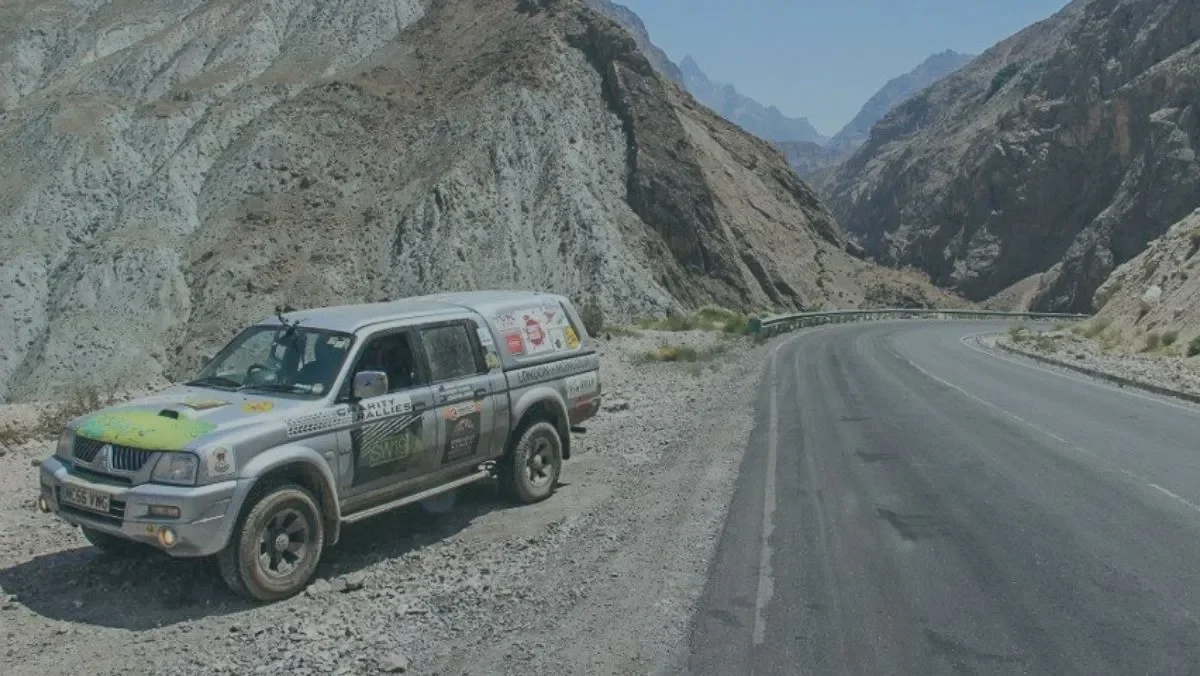



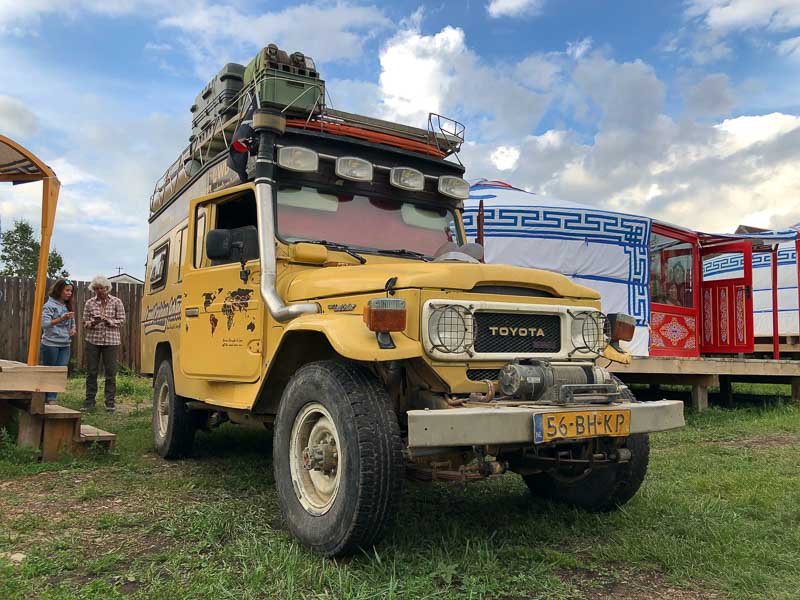
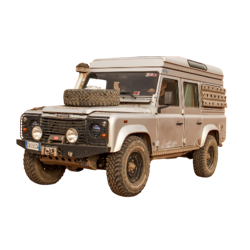
Hello there,
Great information
Any discussion on manual locking hubs and auto locking hubs in part time 4×4?
4×4 uses open differential on road and all power are sent to the wheel with least resistant. So some form of differential lock will get you out of sticky situation.
I have a part time 80 series land cruiser that gives me 14-16L per 100km and it has an automatic locking hub. Once engaging to 4 wheel drive it locks the center differential to allow front and rear axle rotating at the same speed. But i could get stuck on muddy terrain when two wheel slip.
I have another full time 100 series land cruiser that gives 12-14L per 100 km in Laos. It came with front, center and rear diff lock.
Lastly also a Subaru AWD with traction control which gives 8-10L per 100km.
Which one do you recommend to do a trip like yours?
Hi Chris, thank you for your comment!
Good point on the locking hubs – I do plan to add a section on that topic to the article.
Regarding your question, we used a Land Cruiser Prado 120 (it would be a GX470 in the States) and had only one tricky situation when we had to be rescued over 32,000 miles and we were not shying away from difficult off-road sections.
Out of what you mentioned, I would use the 100-series, but would only plan to use it’s front and rear diff locks to get out of a difficult situation, rather than trying to go as far as possible (you will just get stuck later with no reserves in off-roading capabilities).
I wouldn’t use the Subaru for such a trip for different reasons, such as size and parts availability. You will always be able to find someone who can repair a Toyota, but not necessarily a Subaru (don’t get me wrong, I think they are great and reliable, but you will make your job easier with a Toyota)
Great detailed explanation. I would love to see your thoughts on a manual (standard) vs automatic. Personally, I’ll never go back to an automatic even for our daily driver. You drive worse, don’t have as much control, and most of all it’s sooooo boring. Manual all the way!
Hey Alex,
Thank you!
Great idea, I should write an article on that!
I own vehicles with manual transmission (my FJ40) and also automatic (the LC120) and I’d say both come with compromises.
The automatic will not put so much pressure on your drivetrain, you can’t destroy your clutch (easily done off-road!), however, considering all factors, I also prefer an automatic for off-road vehicles, especially for overlanding.
The main reason being is that they’re are much-much easier to fix, but more importantly, even in the most remote corner of the planet, you will actually find a mechanic who will not be afraid to start working on a manual transmission. That’s not the case for an automatic.
It’s a much bigger problem is you have issues with an automatic transmission. If you lose a gear with your manual transmission, usually you have another 4 to use.
However, the biggest risk with an automatic is that it cannot be jump-started. We had an issue with our starter motor in Mongolia, and that was a HUGE headache in the Gobi Desert.